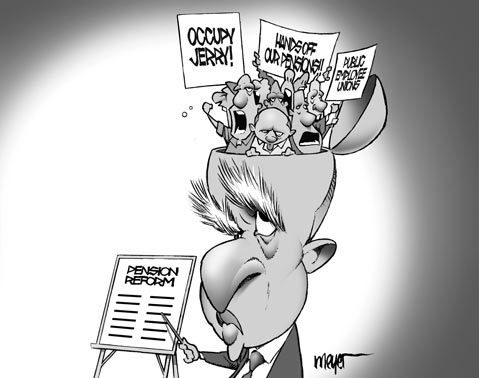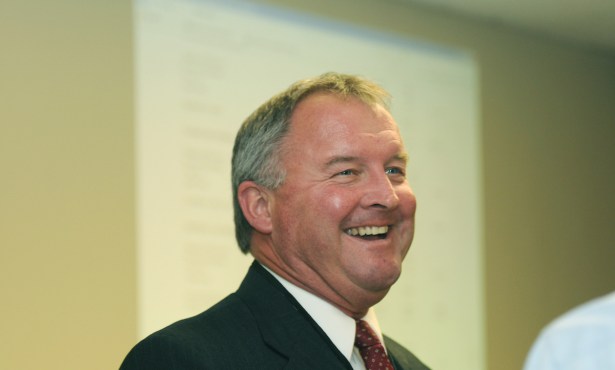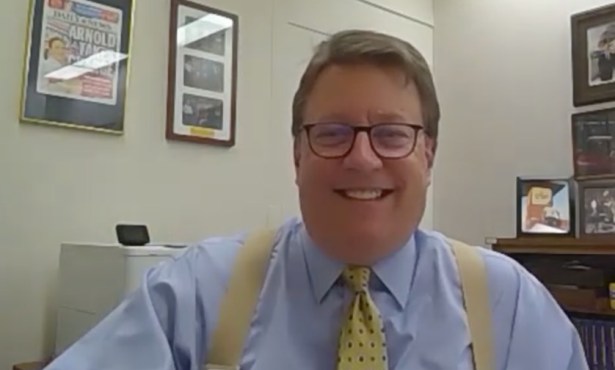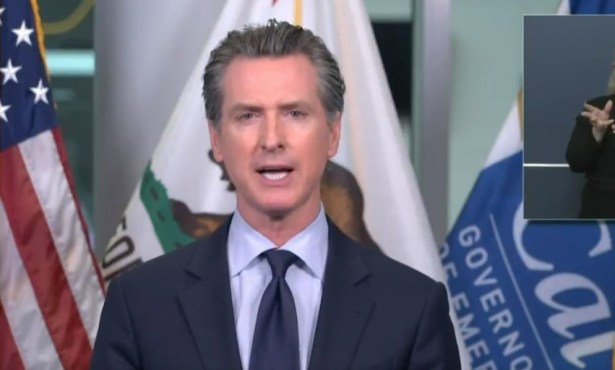Pension Tension
Brown's Labor Allies Bash His Retirement Reform Plan for Public Employees

Jerry Brown has rolled out his long-awaited proposal to reform publicly financed pensions for government workers, drawing protests from Republicans and Democrats alike.
Which means he must be doing something right.
“We’re not on a sustainable path,” the governor said last week, unveiling a 12-point plan to address the multiple billion-dollar obligations for which taxpayers are on the hook in funding the retirements of state and local public employees.

At a time when Sacramento, cities, and counties all face big deficits and huge debts, the pension issue has emerged as the most visible symbol of the public’s dismay about government spending.
As a policy matter, paying for pensions, at least in the short term, is a relatively modest problem given the massive scale of the state’s fiscal woes; retirement costs account for just 3 percent of Sacramento’s overall budget, and the average public pension is only about $26,000 a year, despite news stories highlighting a relatively small number of outrageous abuses. As a long-term issue, however, it is far more dire; one study estimates that state and local governments face an unfunded future pension liability of as much as $500 billion in California, and retirement costs for cities, counties, and special districts, which administer thousands of plans linked to the state’s, are proportionately of much greater magnitude.
As a political matter, however, pensions lead the public’s agenda for what they want changed about government. Nearly eight in 10 Californians identified the cost of retirement plans as a problem in a recent Public Policy Institute of California survey; over half said the state should decrease pension plans as a way to balance the budget this year; and seven in 10 favor a cheaper 401(k) plan over the current, far more expensive, defined benefit system.
THE PLAN: In response, the governor proposed major reforms to restructure the system, which he said would save taxpayers more than $10 billion over the next 30 years. Key elements include:
• Raising the retirement age for most new employees to 67; public workers between 50 and 62 currently can retire with full benefits, depending on the type of work they do.
• Splitting contributions to the system 50-50 between workers and government employers; employees typically now pay a smaller share, and some pay nothing.
• Adopting a hybrid system that would require taxpayers to fund a smaller portion of pensions for new employees, with more financed by private-sector–style 401(k) investment programs.
THE POLITICS: Some Republicans praised the governor for a good-faith effort on what is their top priority, but many GOP leaders knocked the proposal as inadequate in addressing immediate fiscal problems and reducing pension cost for current workers. Said state Republican chairman Tom Del Beccaro: “Brown’s plan, while a small step in the right direction, proposes to save only $1 billion a year. California can’t wait 500 years for a solution.”
Far gnarlier for Brown is the opposition of some fellow Democrats, and of public-employee union leaders, the strongest allies of his campaign for governor, who vowed to fight the plan in the Legislature.
“The governor has indicated that labor will not like many of his proposals,” said labor leader Dave Low, referencing comments Brown made before releasing his proposal. “He is right.”
Brown wants pension reform to be approved by voters and wants it placed on next November’s ballot. To do so, he needs a two-thirds vote of the Legislature.
Responding to Democratic and labor critics, he warned that failure to put pension reform on the 2012 ballot would politically backfire. Unions are aiming at least one tax-increase measure at next year’s election, while conservatives are pushing an anti-labor initiative to prevent automatic withdrawal of union dues from paychecks.
Unless voters have an opportunity to fix the pension mess, the governor said, liberals and progressives will face defeat on both of these issues.
“The Legislature is well advised to take this very seriously,” Brown said, “get it all enacted, and get it on the ballot in November, when other things may be on the ballot that they’re quite interested in.”



